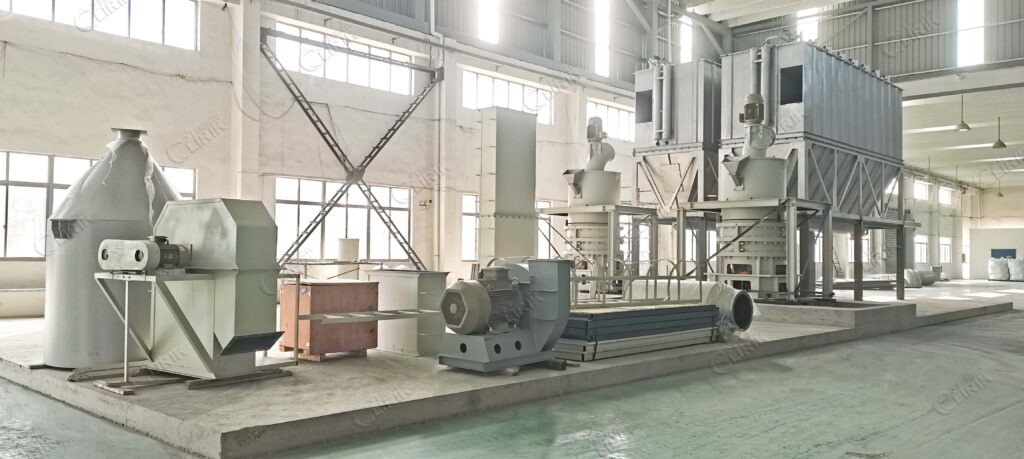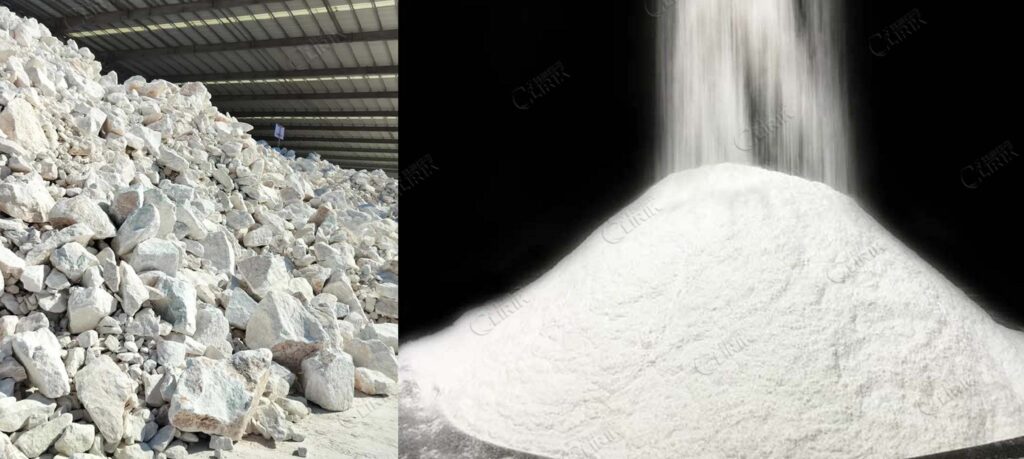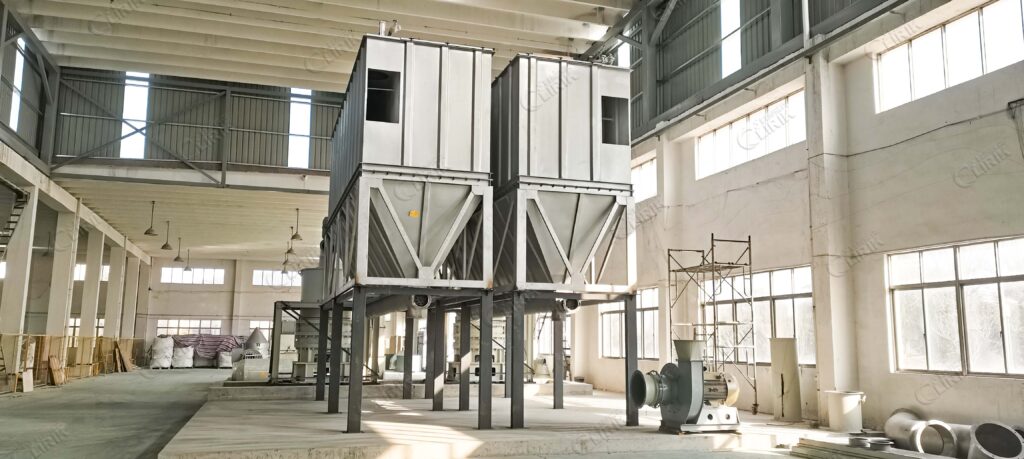Gather the calcium carbonate raw materials. Ensure they are of suitable quality and size for the grinding process. Typically, the raw calcium carbonate should be in the form of lumps or coarse powder. If the materials are in large lumps, they may need to be crushed to a certain extent using a jaw crusher or other suitable crushing equipment.
Clean the raw materials to remove impurities such as dirt, stones, and other foreign substances. This can be done through washing or screening processes to ensure the purity of the calcium carbonate being fed into the grinding mill.
2. Equipment Inspection and Setup:
Conduct a thorough inspection of the Clirik HGM ultrafine grinding mill. Check all the mechanical components, such as the grinding rollers, grinding rings, and the classifier, to ensure they are in good working condition. Look for any signs of wear or damage and replace any worn-out parts if necessary.
Verify the electrical connections and the control system of the grinding mill. Ensure that the power supply is stable and that all the control buttons and indicators are functioning properly.
Set the parameters of the grinding mill according to the desired fineness of the calcium carbonate powder. The HGM mill allows for adjustment of the classifier speed, which directly affects the particle size of the ground material. For example, if a fineness of 1250 mesh is required for the calcium carbonate powder, the classifier speed should be set accordingly based on the mill’s operating manual and previous experience.
3. Safety Measures:
Ensure that all safety equipment is in place and that the operators are wearing appropriate personal protective equipment (PPE), such as safety helmets, earplugs, and dust masks. Grinding operations can generate noise and dust, so it is essential to protect the operators’ hearing and respiratory systems.
Check the emergency stop buttons and safety guards on the grinding mill. Make sure they are easily accessible and functioning correctly so that the machine can be stopped immediately in case of any emergency.

Start the feeding system of the grinding mill. The preprocessed calcium carbonate material is fed into the mill’s hopper. The feeding rate should be controlled to ensure a steady supply of material to the grinding chamber. The feeding system may be a screw feeder, a vibrating feeder, or another suitable device that can deliver the material at a consistent rate.
As the material enters the grinding chamber, it is distributed evenly around the grinding ring. The grinding rollers, which are mounted on the upper part of the mill, exert pressure on the material, causing it to be crushed and ground between the rollers and the grinding ring.
2. Grinding and Classification:
The grinding process involves the continuous rotation of the grinding ring and the grinding rollers. The material is ground into finer particles through the shearing and compressive forces generated by the interaction between the rollers and the ring.
The ground material is then carried by the airflow generated by the blower system of the grinding mill. The airflow carries the fine particles upward into the classifier. The classifier, which is located above the grinding chamber, separates the particles based on their size.
The classifier consists of a rotating impeller and a static casing. The speed of the impeller determines the size of the particles that can pass through. Fine particles that meet the required fineness are allowed to pass through the classifier and are then collected in the powder collector. Coarser particles that do not meet the fineness requirements are returned to the grinding chamber for further grinding.
3. Powder Collection:
The fine calcium carbonate powder that passes through the classifier is carried by the airflow into the powder collector. The powder collector usually consists of a bag filter or a cyclone separator.
In a bag filter system, the airflow containing the fine powder passes through the filter bags. The fine powder particles are trapped on the surface of the bags, while the clean air is exhausted out of the system. The collected powder can then be discharged from the bottom of the bag filter.
In a cyclone separator system, the airflow containing the fine powder enters the cyclone at a high speed. The centrifugal force generated inside the cyclone causes the fine powder particles to separate from the air and settle down at the bottom of the cyclone. The collected powder is then discharged through a discharge valve.

After the grinding process is completed, a sample of the collected calcium carbonate powder should be taken for quality inspection. The fineness of the powder should be checked using a sieve analysis or a laser particle size analyzer to ensure that it meets the required specifications.
Other quality parameters, such as the moisture content and impurity levels, should also be tested. The moisture content should be within an acceptable range to prevent caking or agglomeration of the powder during storage and transportation. The impurity levels should be low to ensure the purity of the final product.
2. Packaging:
Once the quality inspection is passed, the calcium carbonate powder can be packaged for storage or transportation. The packaging should be done in a clean and dry environment to prevent contamination of the powder.
The powder can be packaged in various forms, such as in bags, drums, or bulk containers, depending on the customer’s requirements. The packaging material should be suitable for the calcium carbonate powder and should provide adequate protection during transportation and storage.
3. Storage and Transportation:
Store the packaged calcium calcium carbonate powder in a dry and well-ventilated warehouse. The storage area should be free from moisture, direct sunlight, and other adverse environmental conditions that could affect the quality of the powder.
When transporting the powder, ensure that the transportation vehicles are clean and dry. The packages should be stacked securely to prevent movement during transportation. Follow the relevant transportation regulations and safety guidelines to ensure the safe delivery of the calcium carbonate powder to the customers.

Using Clirik’s HGM ultrafine grinding mill to grind calcium carbonate is an efficient and reliable process. By following the detailed steps outlined above, from careful preparation and equipment setup to precise grinding and thorough post-processing, high-quality calcium carbonate powder can be consistently produced. This process not only ensures the desired fineness and purity of the product but also maintains operational safety and efficiency. With Clirik’s advanced technology and robust equipment, industries relying on ultrafine calcium carbonate powder can achieve their production goals with confidence and precision.
Share: